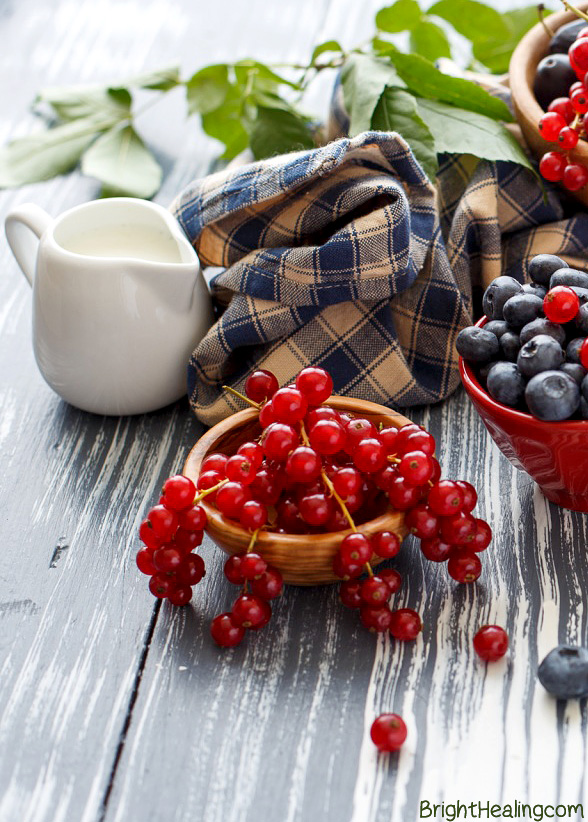Red currants are a member of the genus Ribes, which belong to the family of Grossulariceae, and grows in the north temperate region. It is native to the region of Europe, Germany, France, Italy and Spain. It is a deciduous shrub which produces edible bright red berries.
Red Currant Definition
Red Currants are bright, red berries that grows in bunches in the deciduous red currant shrub, and can be eaten raw as a fruit, or used to prepare sauces and jellies.
A 56 gram serving of redcurrants has only 30 calories, 8 grams of carbohydrates which are broken down into 4 grams of sugar and 2 grams of dietary fibre. It also has 1 gram of protein. This makes redcurrants a healthy alternative to add to a weight loss diet. Fibre helps controls appetite as it makes one feel full for longer.
The fibre helps regulate bowel movement and assists in digestion whilst treating constipation and other digestive problems. Having fibre in the diet also means keeping the cholesterol level healthy thus reducing the risk of heart disease and strokes.
Properties of Redcurrant
The redcurrants consumed before meals are tonic (appetizer) and if consumed after eating they are help the digestive process, being very useful in gastric disorders or insufficiencies. They are also used as laxatives but also as re-mineralizators.
They can also cause diuresis with elimination of a large amount of uric acid, making them very helpful in gout, gravel and rheumatic diseases, and even heart and renal conditions or generally in all the cases in which a too large amount of toxins accumulated in the organism.
Red currants are rich in iron, which is popularly known to be essential for the formation of red blood cells. Red blood cells constitute 40 – 45% of the total composition of blood. Red blood cells are highly important as they carry out the work of transporting blood and other nutrients to various cells and organs in the body. Lack of iron can have many consequences, which can be avoided by taking iron rich foods, including fruits like red currants.
Red currants are rich in vitamin C, which strengthens the immune system, nourishing it to prevent the body from succumbing to viral and bacterial attacks. It prevents not only common colds, but also gives the body the ability to fight against the formation of certain kinds of cancers. Vitamin C also plays an antioxidant role in the respiratory tract, thus proving to be a source of relief for asthmatics. The vitamin C contained in red currants also contains anti-histamine properties, which prevent and reduce the effect of allergies.

They are useful for urinary sores exactly because they favor diuresis but also because they have an active principle that can destroy a series of bacteria. Through diuresis they can help detoxify the body, making them very helpful for arthrosis, rheumatics, gout, etc.
They can also stimulate the hepatic function. And also they help raise the blood pressure.
Redcurrants promote collagen production in the body, which leads to the development of good skin.
Red currant juice is used to cure nausea and vomiting; allergies; low-acid stomach ulcers; high blood pressure; atherosclerosis; deep vein thrombosis; and morning sickness.
Buying & Storing Tips
– When buying redcurrants, look for those that are firm, shiny and bright. Avoid redcurrants showing signs of wilting, as these are not fresh.
– You can store these in a container with a plastic cover and place them in the fridge. Use the redcurrants within 1 to 2 days.
– Redcurrants will remain fresh even after 10 to 12 months if placed in the freezer.
– If you are storing them, never remove the currants from their strigs. Redcurrants will burst and lose their sugary juice when their strigs are taken off.
– To store these for a long time, the best option is to brush the berries into a pulp and simmer for 10 minutes. After straining properly, bottle the juice and keep it in the fridge for later use.
Tips For Preparing Redcurrants
Excess exposure to moisture will spoil redcurrants in no time. Make sure to consume the redcurrants immediately after washing. To easily remove the redcurrants from their strigs without much damage to the currants, simply use a fork to comb the currants from their strigs.
